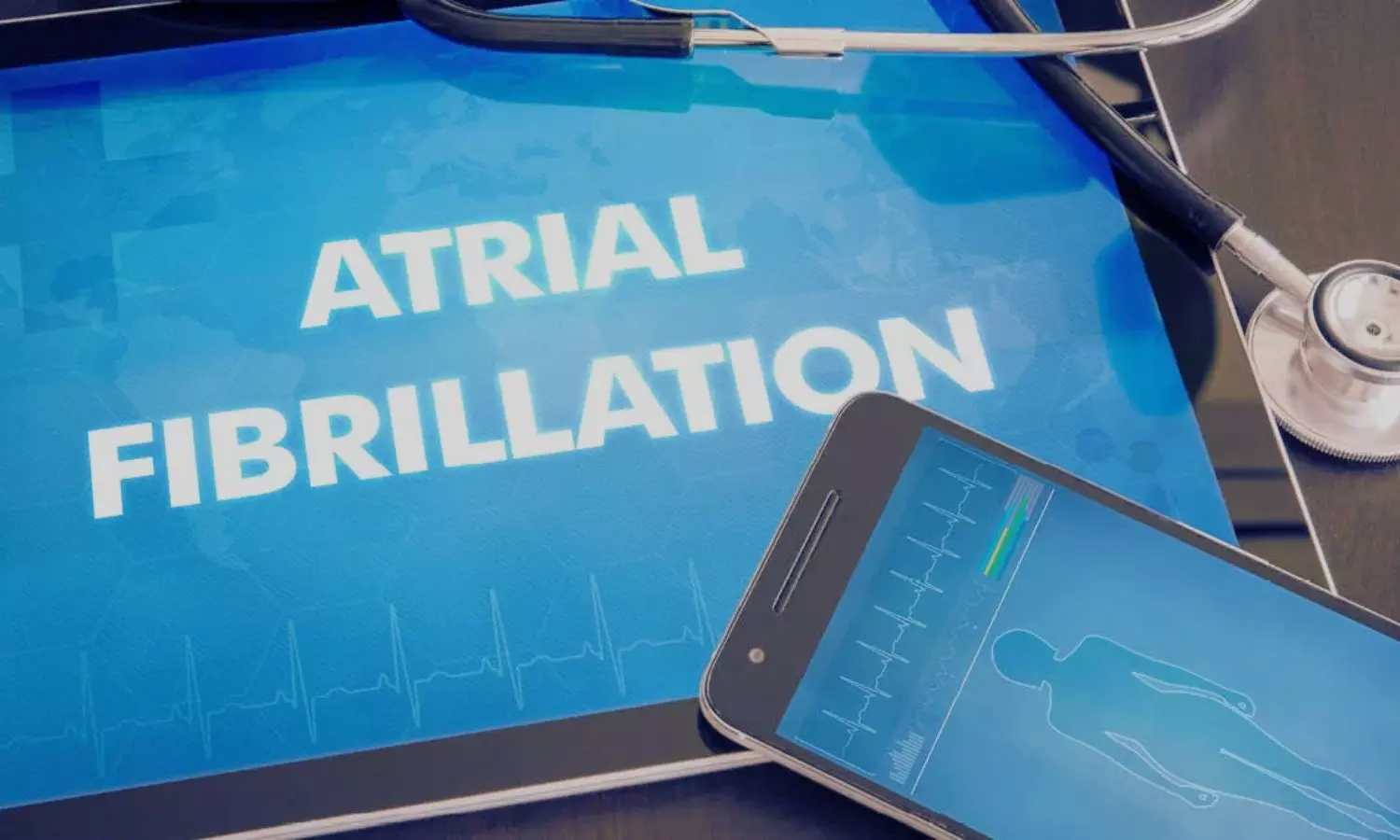How our brains are drawn to and spot faces everywhere
Powered by WPeMatico
Powered by WPeMatico
Powered by WPeMatico
Powered by WPeMatico
Powered by WPeMatico

USA: A recent study published in the Resuscitation journal sheds light on the complex relationship between body mass index (BMI) and survival outcomes in patients experiencing in-hospital cardiac arrest (IHCA). Conducted by Dr. Nobuhiro Ikemura and colleagues from the UMKC Healthcare Institute for Innovations in Quality, Kansas City, the study analyzed data from over 56,000 patients to understand how BMI influences both survival to discharge and neurologically favorable outcomes.
“The study of 56,411 in-hospital cardiac arrest patients found that underweight individuals (BMI <18.5 kg/m²) had significantly lower odds of favorable neurological survival (OR 0.64) and survival to discharge (OR 0.76), regardless of rhythm type,” the researchers reported. “In contrast, overweight and obese patients showed improved outcomes (OR ~1.17), but only in cases with shockable rhythms. No survival benefit was observed for individuals with very high obesity levels.”
Using data collected from the Get With The Guidelines-Resuscitation registry between 2006 and 2012, the researchers categorized patients based on BMI: underweight (<18.5 kg/m²), normal (18.5–24.9), overweight (25.0–29.9), obese (30.0–34.9), and very obese (≥35.0). Two key outcomes were assessed: survival to hospital discharge and favorable neurological status at discharge, defined as a cerebral performance category (CPC) score of 1.
The key findings were as follows:
The findings highlight that BMI plays a varying role depending on the type of cardiac arrest rhythm. While being overweight or obese may offer a protective advantage in cases of shockable rhythms, this benefit does not extend to non-shockable events. Regardless of rhythm type, underweight individuals consistently had the poorest outcomes.
The authors caution that these results should be interpreted in the context of certain limitations. The registry discontinued the collection of height and weight data after 2012, which may limit the applicability of findings to current resuscitation practices, especially given evolving treatment guidelines.
“Despite this, the study provides valuable insights into how body composition may influence cardiac arrest outcomes and highlights the need for tailored clinical strategies that consider BMI as a potential prognostic factor. Further research is needed to explore the underlying mechanisms and to evaluate whether weight-related interventions could impact post-arrest survival and recovery,” the authors concluded.
Reference:
Ikemura, N., Spertus, J. A., Cho, Y. J., Jones, P. G., Jawad, M. A., O’Keefe, E. L., & Chan, P. S. (2025). Association Between Body Mass Index and Survival Outcomes for In-Hospital Cardiac Arrest. Resuscitation, 110671. https://doi.org/10.1016/j.resuscitation.2025.110671
Powered by WPeMatico

From low-carb ice cream to keto protein bars to “sugar-free” soda, the decades-old sweetener erythritol is everywhere.
But new University of Colorado Boulder research shows the popular sugar substitute and specialty food additive comes with serious downsides, impacting brain cells in numerous ways that can boost risk of stroke.
The study was published in the Journal of Applied Physiology.
“Our study adds to the evidence suggesting that non-nutritive sweeteners that have generally been purported to be safe, may not come without negative health consequences,” said senior author Christopher DeSouza, professor of integrative physiology and director of the Integrative Vascular Biology Lab.
First approved by the Food and Drug Administration in 2001, erythritol is a sugar alcohol, often produced by fermenting corn and found in hundreds of products. It has almost no calories, is about 80% as sweet as table sugar, and has negligible impact on insulin levels, making it a favorite for people trying to lose weight, keep their blood sugar in check or avoid carbohydrates.
But recent research has begun to shed light on its risks.
One recent study involving 4,000 people in the U.S. and Europe found that men and women with higher circulating levels of erythritol were significantly more likely to have a heart attack or stroke within the next three years.
DeSouza and first author Auburn Berry, a graduate student in his lab, set out to understand what might be driving that increased risk.
Researchers in the lab treated human cells that line blood vessels in the brain for three hours with about the same amount of erythritol contained in a typical sugar-free beverage.
They observed that the treated cells were altered in numerous ways: They expressed significantly less nitric oxide, a molecule that relaxes and widens blood vessels, and more endothelin-1, a protein that constricts blood vessels. Meanwhile, when challenged with a clot-forming compound called thrombin, cellular production of the natural clot-busting compound t-PA was “markedly blunted.” The erythritol-treated cells also produced more reactive oxygen species (ROS), a.k.a. “free radicals,” metabolic byproducts which can age and damage cells and inflame tissue.
“Big picture, if your vessels are more constricted and your ability to break down blood clots is lowered, your risk of stroke goes up,” said Berry. “Our research demonstrates not only that, but how erythritol has the potential to increase stroke risk.”
DeSouza notes that their study used only a serving-size worth of the sugar substitute. For those who consume multiple servings per day, the impact, presumably, could be worse.
The authors caution that their study was a laboratory study, conducted on cells, and larger studies in people are needed.
That said, De Souza encourages consumers to read labels, looking for erythritol or “sugar alcohol” on the label.
“Given the epidemiological study that inspired our work, and now our cellular findings, we believe it would be prudent for people to monitor their consumption of non-nutrient-sweeteners such as this one,” he said.
Reference:
Auburn R. Berry,Samuel T. Ruzzene,Emily I. Ostrander,Kendra N. Wegerson, The non-nutritive sweetener erythritol adversely affects brain microvascular endothelial cell function, Journal of Applied Physiology, https://doi.org/10.1152/japplphysiol.00276.2025
Powered by WPeMatico

Recent observational study aimed to validate the Rhodes Index of Nausea, Vomiting, and Retching (RINVR) scale for assessing postoperative nausea and vomiting (PONV) intensity and to develop a simplified scoring system-Simplified PONV Severity Score (SPONVSS)-to evaluate its effects on sleep quality and vitality in patients undergoing surgery.
Significance of PONV
PONV is a prevalent complication affecting approximately one-third of surgical patients, significantly impacting their recovery. While existing guidelines primarily focus on PONV incidence, this study sought to address severity, recognizing that patients’ experiences of nausea and vomiting can vary widely. The complexity of the RINVR scale, however, prompted the researchers to create a more accessible metric. SPONVSS comprises three elements: vomiting times, retching times, and nausea frequency, scored on a scale from 0 to 4. The validation process involved a cohort of 967 patients, assessing the correlation between SPONVSS scores and prescribed antiemetics, as well as postoperative outcomes related to sleep and vitality.
Statistical Findings
Statistical analysis revealed strong associations between higher SPONVSS scores (≥ 3) and the need for rescue antiemetics, as well as poor sleep quality and vitality. Specifically, patients classified with severe PONV—indicated by SPONVSS ≥ 3—demonstrated significant increases in antiemetic administration (38.2%) compared to those with lower scores (1.2%). The study also found that only 8% of patients with severe PONV reported good sleep.
Predictive Validity of the RINVR
The RINVR’s predictive validity was established through area under the curve (AUC) analysis, indicating strong performance in forecasting both antiemetic usage and associated quality of life outcomes. The decision to finalize SPONVSS elements was based on the combined metrics’ superior predictive power exhibited in ROC analyses.
Implications of Findings
Importantly, the findings suggest that PONV intensity independently influences sleep and vitality postoperatively, reinforcing the necessity for enhanced PONV management strategies. Additionally, demographic factors such as age, sex, and surgical type were analyzed concerning their roles in PONV severity, with variations in outcomes identified.
Conclusion and Future Research
Overall, by establishing a simplified tool for assessing PONV severity, the study aims to improve postoperative care and patient recovery through more precise management of antiemetic prescriptions, ultimately facilitating better sleep and vitality outcomes for surgical patients. Future research is encouraged to integrate objective measures of sleep quality to strengthen the findings.
Key Points
– -Validation of RINVR and Development of SPONVSS-: The study validates the Rhodes Index of Nausea, Vomiting, and Retching (RINVR) for assessing postoperative nausea and vomiting (PONV) intensity and introduces the Simplified PONV Severity Score (SPONVSS) as a more accessible tool for evaluating PONV effects on sleep quality and vitality. SPONVSS includes three parameters: vomiting frequency, retching frequency, and nausea frequency.
– -Prevalence and Impact of PONV-: Approximately one-third of surgical patients experience PONV, significantly hindering recovery. While guideline emphasis has traditionally been on incidence, this research highlights the importance of severity in shaping patient experiences and outcomes related to nausea and vomiting.
– -Correlation with Postoperative Outcomes-: Statistical analysis demonstrated a strong correlation between SPONVSS scores (≥ 3) and increased rescue antiemetic utilization, alongside diminished sleep quality and vitality. Specifically, 38.2% of patients with severe PONV required additional antiemetics, contrasting sharply with just 1.2% in lower score groups, and only 8% of these patients reported good sleep quality.
– -Predictive Validity Assessment-: Through area under the curve (AUC) analyses, the RINVR exhibited strong predictive validity for anticipating antiemetic requirements and related quality of life outcomes, leading to the selection of SPONVSS components based on superior predictive accuracy demonstrated in ROC analyses.
– -Influence of Demographic Factors-: The study assessed the impacts of demographic variables such as age, sex, and type of surgery on PONV severity, revealing noted variability in outcomes associated with these factors, which could influence clinical PONV management strategies.
– -Implications for Management and Future Research-: Findings signal a clear link between PONV intensity and postoperative sleep and vitality, underscoring the need for improved management protocols. Future investigations are recommended to incorporate objective metrics for sleep quality to enhance and validate these findings.
Reference –
Shih-Feng Weng et al. (2025). A Prospective Cohort Observational Study To Validate A Simplified Postoperative Nausea And Vomiting Severity Scale And Its Effects On Sleep And Vitality. *BMC Anesthesiology*, 25. https://doi.org/10.1186/s12871-025-03074-2.
Powered by WPeMatico

Türkiye: A recent study published in BMC Emergency Medicine has validated the Pulmonary Embolism Advanced Cardiac Evaluation (PEACE) Score as a reliable tool for identifying echocardiographic abnormalities in patients diagnosed with pulmonary embolism (PE). The study, conducted by Dr. Kazım Ersin Altınsoy at Gaziantep City Hospital and Gaziantep Islam Science and Technology University, Türkiye, supports the use of the PEACE Score for early risk stratification in emergency settings.
According to the study, the PEACE Score accurately stratifies pulmonary embolism risk, with strong links to echo abnormalities (AUC 0.82) and RV dysfunction (AUC 0.85). A score >5 offers 84.6% sensitivity and 79.2% specificity, aiding swift ICU triage in high-risk cases.
Pulmonary embolism is a potentially fatal condition that demands swift clinical assessment. The PEACE Score was developed as a comprehensive risk tool that combines clinical data, lab values, and cardiac parameters to guide management decisions. This prospective study aimed to evaluate how effectively the PEACE Score correlates with echocardiographic findings, especially right ventricular dysfunction, and whether it could serve as a reliable predictor of patient outcomes.
The study enrolled 120 adult patients diagnosed with PE via CT angiography in the emergency department. Based on PEACE Scores, patients were classified into three categories: low risk (<3 points), intermediate risk (3–5 points), and high risk (>5 points). Echocardiographic data were collected but not used for categorization—rather, they were evaluated separately to assess the score’s predictive validity.
The following were the key findings of the study:
Dr. Ersin Altınsoy concluded that the PEACE Score offers a rapid, accessible, and effective method for assessing PE severity and guiding early treatment decisions. Notably, patients in the high-risk category were more likely to require thrombolytic therapy and intensive care support, indicating the score’s potential role in triage and resource planning.
While promising, the author notes that the PEACE Score is not intended to predict long-term survival or evaluate comorbid conditions, and larger studies are warranted to confirm its broader applicability. Still, integrating the PEACE Score into emergency protocols could significantly enhance early diagnostic accuracy and treatment pathways for pulmonary embolism.
Reference:
Altınsoy, K.E. Validation of the PEACE score for predicting abnormal echocardiographic findings in pulmonary embolism patients. BMC Emerg Med 25, 96 (2025). https://doi.org/10.1186/s12873-025-01259-z
Powered by WPeMatico

A new study published in The Annals of Thoracic Surgery, a journal from The Society of Thoracic Surgeons, finds that Medicare patients with atrial fibrillation (AF) who undergo surgical ablation during isolated coronary artery bypass grafting (CABG) live longer than those who do not, offering compelling support for clinical guidelines that recommend this procedure but are too often not followed in practice.
Researchers examined Medicare claims data from more than 87,000 patients with preexisting AF who underwent CABG between 2008 and 2019. Overall, only 22% of studied patients received concomitant surgical ablation during CABG, and, although the prevalence of ablation did increase over the study period, ablation rates were only 27% in 2019 (two years after a Class I recommendation for ablation was published by the Society of Thoracic Surgeons).
The study found that surgical ablation during CABG was associated with a risk-adjusted median survival advantage of 4.4 months compared to patients who did not receive ablation (7.82 vs. 7.46 years; P<0.001). Patients treated by surgeons who frequently performed ablation had a median survival advantage of nearly five months (7.03 vs. 6.62 years; P<0.001) compared to those treated by surgeons who rarely performed the procedure.
“This study is one of several recent analyses suggesting that surgical ablation may meaningfully improve survival in patients with preexisting atrial fibrillation undergoing CABG,” said Justin Schaffer, MD, lead author of the study and medical director of surgical outcomes at Baylor Scott & White – The Heart Hospital. “Our analysis found that the treatment effect of surgical ablation for AF manifested late, over two years after CABG. We hypothesize this is because ablation leads to a decreased incidence of tachycardia-related heart failure, which translates to improved late survival.”
To reduce bias related to the fact that healthier patients are more likely to receive ablation, the researchers used two advanced statistical methods.
One method (overlap propensity score weighting) adjusted for measured differences between patients, while the other (a surgeon-preference instrumental variable analysis) compared outcomes among patients treated by surgeons who frequently ablate and those who rarely do. This method simulates the effects of randomization by leveraging variation in in clinical practice among surgeons to balance unmeasured differences between patients. Under certain assumptions, patients can be thought of as being pseudo-randomly distributed among surgeons with different approaches to ablation.
“We used both as-treated and surgeon-preference analyses to provide a more complete picture of ablation’s potential benefits,” Dr. Schaffer explained. “While each method has strengths and limitations, the consistency of findings across both approaches is encouraging, especially given that a large-scale randomized trial in this area does not appear forthcoming.”
Between 10% and 20% of patients undergoing CABG have atrial fibrillation before surgery, a condition that is associated with both perioperative complications and reduced long-term survival. Prior research has shown that surgical ablation can help restore normal heart rhythm and improve long-term outcomes, but the practice remains underutilized.
“These data underscore the importance of guideline adherence and hopefully will lead to a reevaluation of surgical decision-making for patients with AF,” added study coauthor John Squiers, MD, Baylor Scott & White The Heart Hospital.
Reference:
Schaffer, Justin M. et al., Survival After Surgical Ablation of Atrial Fibrillation During Coronary Artery Bypass in Medicare Beneficiaries, The Annals of Thoracic Surgery, DOI 10.1016/j.athoracsur.2025.03.044
Powered by WPeMatico

Novel research presented today at the 41st Annual Meeting of the European Society of Human Reproduction and Embryology (ESHRE) has found that embryos from women with polycystic ovary syndrome (PCOS) carry a distinctive ‘epigenetic memory’ that could explain why the condition often runs in families.
PCOS is a common hormonal disorder affecting an estimated 1 in 10 women of reproductive age worldwide. It is characterised by irregular menstrual cycles, excess levels of androgens (male hormones) and the presence of multiple cysts on the ovaries. While it is recognised as a leading cause of infertility, the exact causes and mechanisms of inheritance remain unclear.
The study, led by Dr. Qianshu Zhu, analysed oocytes and pre-implantation embryos from 133 PCOS patients and 95 non-PCOS infertile women undergoing fertility treatment. The team used ultra-low-input sequencing to analyse both gene activity and epigenetic changes – chemical tags that regulate how genes turn on and off without altering the underlying DNA sequence.
The research revealed widespread disruptions in the activity of genes responsible for early embryonic genome activation, metabolic processes, epigenetic regulation, and chromatin structure in embryos from women with PCOS. These disruptions also affected retrotransposons – mobile DNA elements usually tightly regulated to maintain genomic stability – further highlighting how early developmental programming is affected.
These abnormalities were closely linked to irregular patterns of three histone marks that play a key role in controlling gene expression: H3K27me3, H3K4me3 and H3K9me3.
“Importantly, about half of the abnormal H3K27me3 signatures we saw in Day 3 embryos were already present in the oocyte”, said Dr. Zhu. “This tells us that an epigenetic signal is being passed from mother to embryo before implantation even begins.”
Treating affected embryos in vitro with two PRC2 inhibitors (EED226 and valemetostat) reduced abnormal H3K27me3 levels and partially restored normal gene activity, suggesting a potential therapeutic avenue for correcting epigenetic imbalances.
“We were surprised to find that H3K27me3, which is a histone mark best known in cancer biology, could also be an inherited driver of PCOS”, Dr. Zhu noted. “It opens a new window for embryo assessment and perhaps even intervention.”
Currently, PCOS diagnostics focus on hormone levels and ovarian morphology. Epigenetic profiling, particularly of H3K27me3, could eventually complement these tools, offering earlier risk assessment for offspring conceived by affected mothers. In assisted reproductive technologies (ART), H3K27me3 patterns may even serve as biomarkers for embryo selection during IVF, potentially improving the success of fertility treatments.
Dr. Zhu cautioned that the work is based on laboratory-grown embryos and does not yet prove long-term effects in children. The team’s next step is to validate the findings in mouse models by knocking down the Kdm6a and Kdm6b genes, which remove H3K27me3, to investigate whether offspring develop PCOS-like traits.
“If we confirm that altering these histone marks changes PCOS traits in the next generation, we’ll have a powerful target for prevention”, he said.
Prof. Dr. Karen Sermon, Chair of ESHRE, commented, “PCOS remains largely unsolved as to the molecular origins of the disease, and these findings on a large number of oocytes and embryos from affected women open a new avenue for its understanding and even treatment.”
Reference:
Dysregulated epigenetic memory in early embryos offers new clues to the inheritance of polycystic ovary syndrome (PCOS), European Society of Human Reproduction and Embryology, Meeting: ESHRE 41st Annual Meeting.
Powered by WPeMatico
